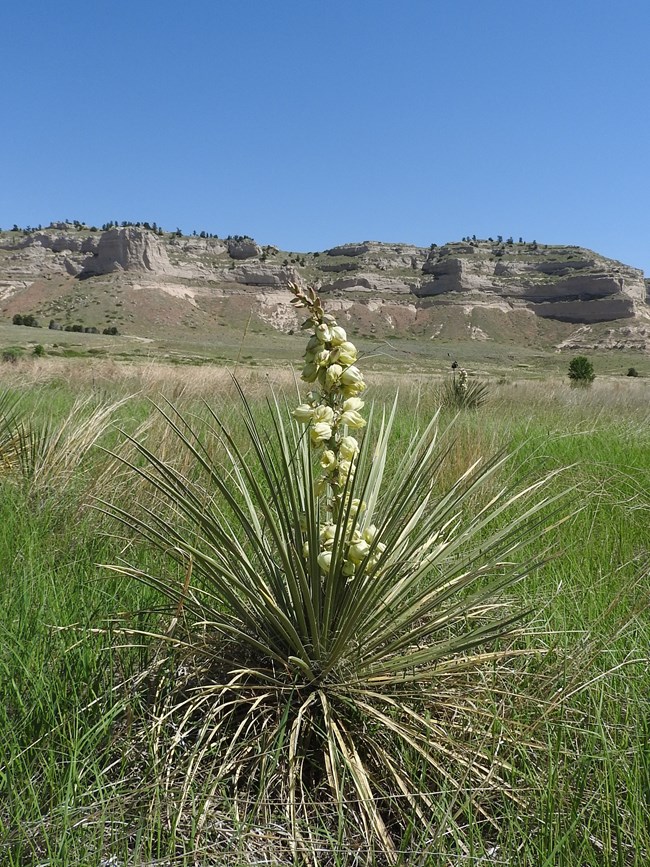Last updated: April 28, 2021
Article
Soapweed Yucca

NPS
Soapweed yucca is an evergreen shrub that grows up to three feet high. It is able to survive the arid conditions of the Great Plains due to its deep (up to 20 feet) taproot, and extensive system of lateral roots that can extend up to 30 feet. In June, mature yucca plants send up a 2 to 5 foot tall stalk on which clusters of creamy-white flowers form. These flowers are primarily pollinated by the Yucca moth (Pronuba). Neither species (yucca or moth) could survive without the other. The moth gathers pollen from a yucca flower, then flies to another yucca plant where it lays its eggs in the ovary of the plant and deliberately pollinates another flower. This provides their larvae with a food source after they hatch, as the moth larvae consume a small number of the yucca's devloping fruit.
Soapweed yucca provides food and nesting sites for small mammals, birds and reptiles. Besides its use as a soap, people have used soapweed leaves for making mats and cordage.
